Muscle Snatch: Technique, Benefits & Common Mistakes
Author:
Reviewed by:
(21 years of Oly Lifting experience)
Unlock your full potential by engaging with our experts and community! Have questions about your fitness journey or looking for expert advice on weightlifting techniques? Don’t hesitate — leave a comment below and Jacek Szymanowski will provide a personalized answer and insights to help you reach your goals.
Torokhtiy is reader-supported. Some links are affiliate links, and we may earn a commission at no extra cost to you. See our disclosure page for details.
One of the least utilized and frequently done wrong drills in weightlifting may be the muscle snatch. Due to its frequently poor execution, which prevents it from serving the intended objective, it may not be used as frequently as it could be.
The muscle snatch is exactly what it sounds like – it’s a snatch version emphasizing a lot of muscle strength without many technical details required in a regular snatch. An exercise that emphasizes aspects including finishing the pull, raising the elbows, quick turnover, and maintaining contact with the bar.
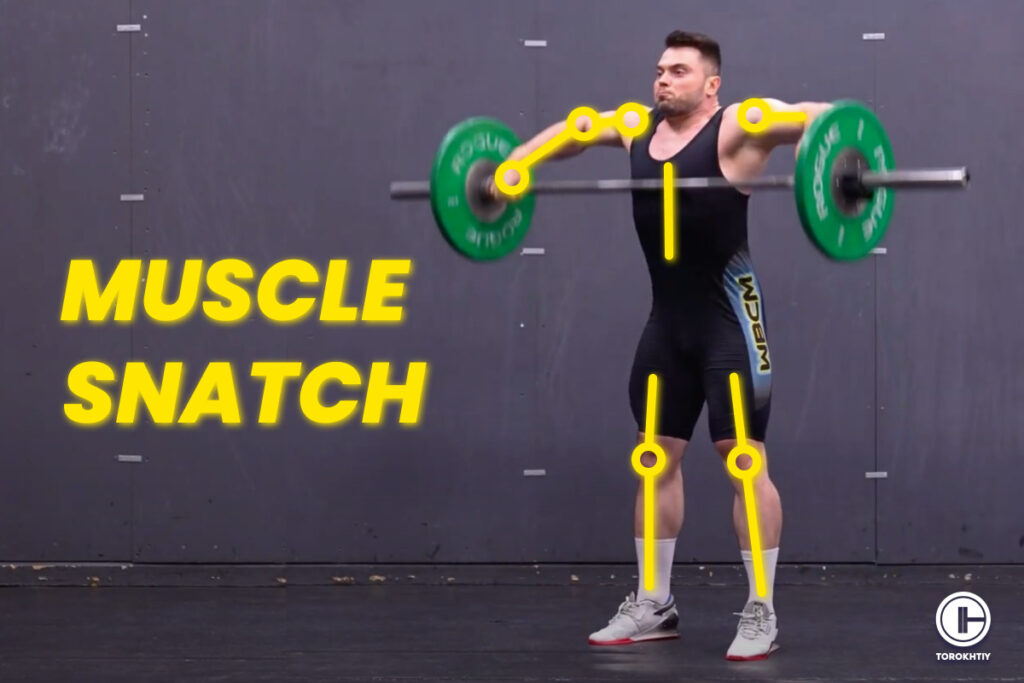
The idea is to avoid making any sudden movements beneath the bar while keeping the feet level on the ground.
The muscle snatch is a variation of the power snatch. Coaches use it to work on the snatch movement, step up its first phase, and improve the mechanics and smoothness of the pull and turnover. Muscle snatch is one of the most popular strength exercises not only in weightlifting but in a regular strength workout too. It has a lot of variations: different grips and starting positions.
You may even come across its adaptations with a plate, kettlebell, different balls, and fitness bags instead of a barbell. In functional fitness, athletes sometimes use unstable surfaces such as BOSU, fitballs, etc.
Still, coaches and athletes often fail to appreciate and use barbell muscle snatch properly. The reason is a bad understanding of the exercise’s value and help. In this case, it entails the wrong technique and you won’t get its obvious benefits.
In this article, we will discuss what is muscle snatch as a basic exercise that can be used by Olympic weightlifters, and athletes from other kinds of sport.
What Is Muscle Snatch?
The muscle snatch is a weightlifting exercise that focuses on improving your upper body strength and technique for the snatch. Its main purpose is to train the pulling phase of the snatch without using a full squat to catch the bar. It helps develop power, speed, and precision by enforcing a continuous pull through the entire range of motion.
It’s especially useful for improving your ability to transition from the pull to the overhead position smoothly and quickly. Without the catch phase in a squat, you can focus on strengthening the pull and improving turnover, which are crucial for properly doing the snatch.
How to Do the Muscle Snatch?
1. Setup
Set up the snatch starting position. Stand over a barbell, feet hip-width apart, and grip the bar. Hinge at the hips with a flat back.
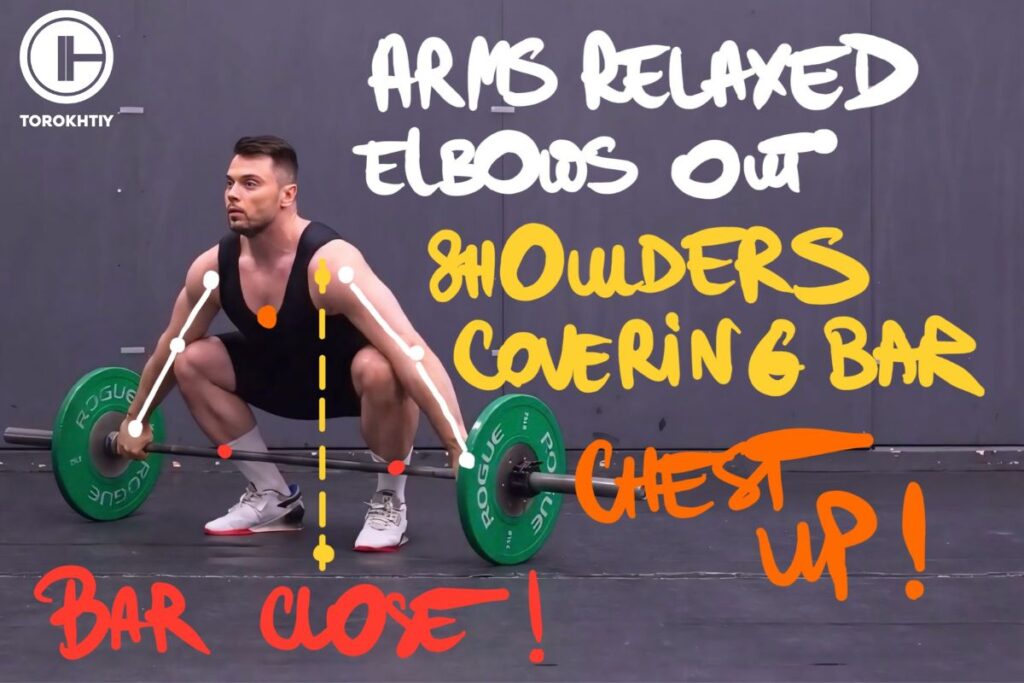
2. First Pull
Drive a barbell off a platform and move till you reach the full knee and hip extension. At this stage, instead of the second pull and turnover, drive your elbows vertically and continue pulling the bar while keeping it as close to the body as possible. Remember to direct the elbows strictly upwards and outside.
The focus is on powerful upward extension and using the momentum to smoothly transition to the next phase.
3. Turnover and Catch
After reaching the maximum height, rotate the forearms and keep going – “punch” the barbell and press it up to the final overhead position slightly behind the neck. The last phase should be precise, firm, and aggressive. Maintain the torso, knee, and hip joints straight.
This is the main difference between muscle snatch vs power snatch: no second pull or squat in the turnover. In order to reach effective dynamics, keep the bar in control throughout the whole range of motion with no pauses or slowing down.
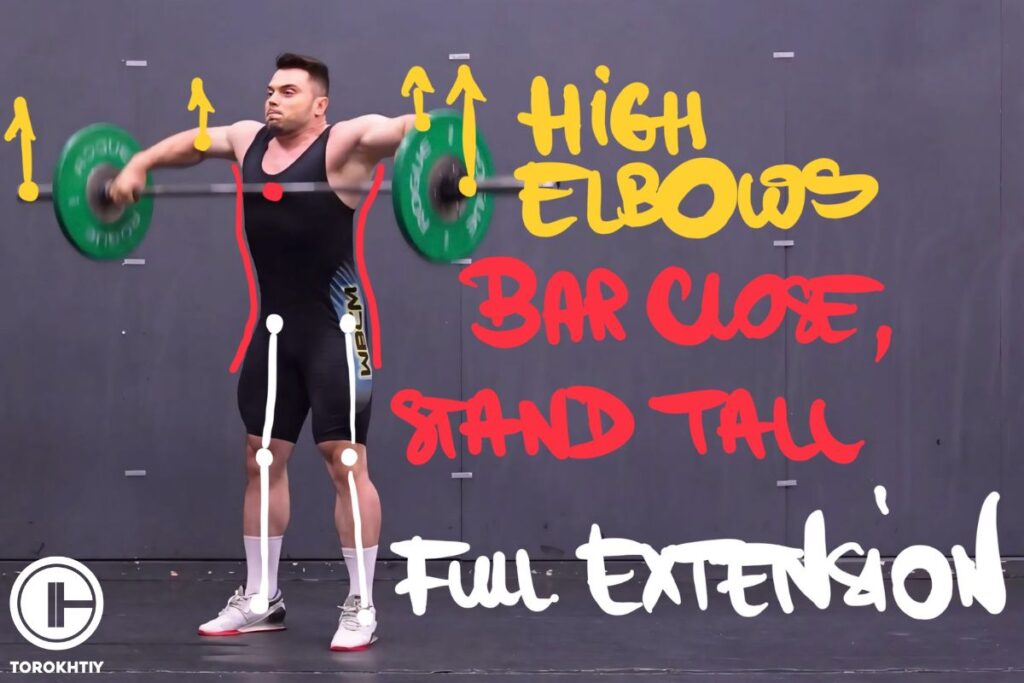
4. Stabilize
You can only benefit from this exercise if you don’t make a very common mistake – pointing elbows down in the final phase. If it happens, it becomes something like the muscle clean + neither overhead nor chest press with a wide grip. Keeping elbows pointed up and out helps maintain the integrity of the lift and prevents the bar from drifting forward.
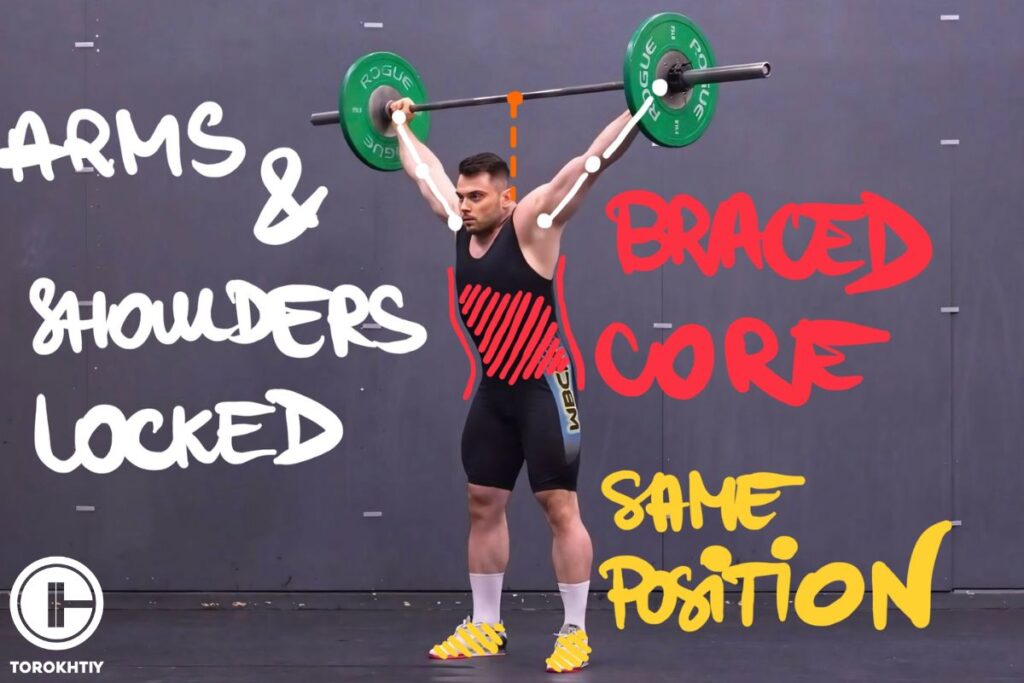
5. Lower the Barbell
While learning this movement, it is worth imagining it as a set of the high-pull without the second pull but with powerful arm work in the end. It helps create the right stereotyped movement emphasizing “high elbows”.
It is important to combine both light and heavy weights for muscle snatches. In the first case, it improves the mechanics of the upper body, and in the second case, it boosts the power in the same snatch phases.
Save it for easy access!
Bookmark this page now to access the program and instructional videos anytime, anywhere.
Stop wasting time searching during your gym sessions.
How to Program Muscle Snatch?
Beginner
- Reps: 5-6 reps per set
- Sets: 3-4 sets
- Frequency: Do the muscle snatch twice a week
- Progression: Use light weights or an empty bar to master the technique. Once you do that, you can increase the weight by 5-10 pounds
Intermediate
- Reps: 3-4 reps per set
- Sets: 4-5 sets
- Frequency: Do the muscle snatch 2-3 times a week
- Progression: Integrate variations like the power snatch or snatch pulls to develop power and speed. Increase the weight you’re working with in 5-pound increments (as much as you can lift with perfect form)
Advanced
- Reps: 1-3 reps per set
- Sets: 5-6 sets
- Frequency: Do the muscle snatch 3-4 times a week
- Progression: Focus on maximizing power output with heavier loads and high-intensity training sessions. Do complex sets and adjust the weight based on performance and recovery. periodic testing of snatch maxes can help track progress and adjust programming as needed
Muscles Worked by the Muscle Snatch
1. Traps
The traps ae crucial for the upper phase of the lift. They help elevate and retract the scapulae and make sure your shoulder blades are moving properly. They also help stabilize the bar overhead and maintain a secure lockout position.
2. Delts
The deltoids are responsible mostly for overhead pressing power and stability. They activate during the final drive up, help extend the arms nad stabilize the weight overhead.
3. Quads
Your quads are active right front he start. They’re important for extending the knees, which is key during the first lift off the ground. They provide the explosive strength you need for the jump and reach phase.
4. Glutes and Hamstrings
These muscles work together to power the hip extension that’s essential for generating the upward momentum of the barbell. They’re critical for maintaining a strong, explosive pull.
5. Forearm muscles
The muscles in your forearms are essential for grip strength and control, but they also make wrist rotation possible, and that’s crucial during the catch. Strong forearms ensure that the bar is securely moved into the overhead position.
6. Core
The core keeps you stable and it’s important for force transfer throughout the lift. It keeps your torso strong and upright and prevents you from swaying forward and backward.
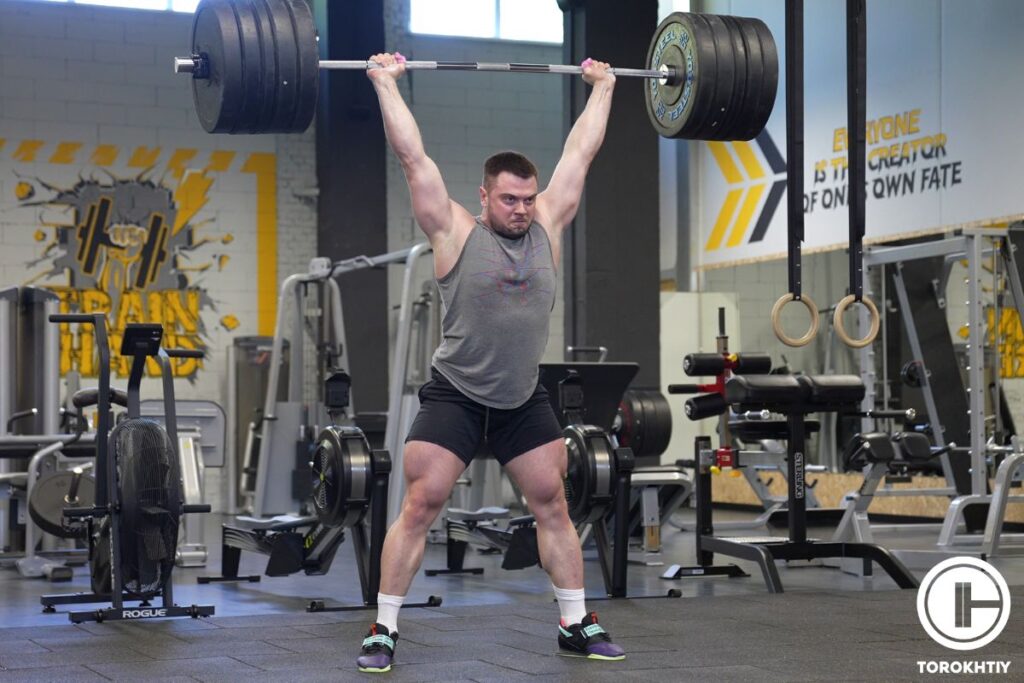
Follow us!

Free!
Get a 2-week Weightlifting Program as a bonus for the subscription to kickstart your training plan!

Free!
4 benefits of Muscle Snatch
✅ The targeted and high-quality preparation for the snatch:
The muscle snatch is a special warm-up for all upper limb muscles before the heavy snatch. The muscle snatch with comparably light weights during the warm-up perfectly “switches on” the lower and upper back, triceps, biceps, shoulders, etc.
✅ Improves the power and technique in the turnover.
Many athletes lack the upper body strength and/or coordination to pull a bar high enough and instantly get under it. The mechanics of the muscle snatch helps solve the problem of power and timing.
✅ Improves the trajectory and the sequence of the muscle involvement in the pull and snatches exercise.
If the muscle snatch is performed correctly, an athlete locks out the knee and hip joints completely. It keeps them from moving the center of gravity either back or forward. Also, an athlete can’t jump to fix the weight. Therefore, you improve the balance and the pull movement which are very important for the snatch.
Another mistake is losing control at the final stage. “A technical disease” of many athletes is sending the bar away from them after a powerful second pull instead of keeping it as close to the body as possible. The properly performed muscle snatch will help “heal” it.
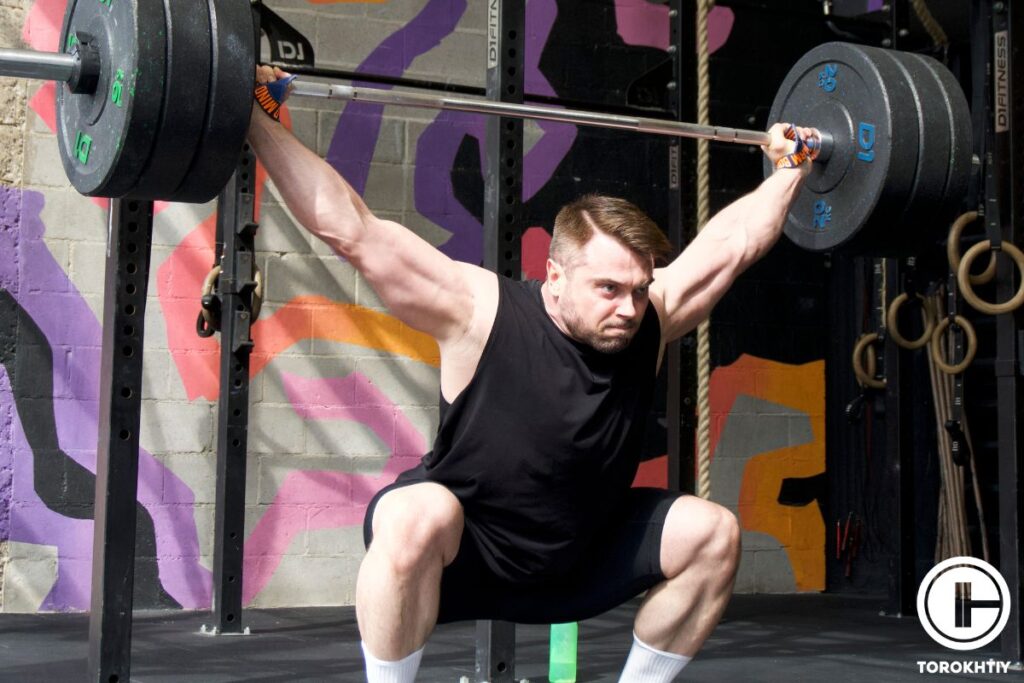
✅ Optimal variation in case of injuries or limitations.
In case of slight injuries, a doctor or rehabilitation specialist may recommend avoiding dynamic and aggressive snatch exercises for a while.
However, performing the muscle snatch within a comfortable load will keep all muscles toned and even improve coordination and particular elements’ preciseness. The muscle snatch is also a great tool to warm up and cease sore muscles after a heavy workout.
Who Should Do the Muscle Snatch?
The muscle snatch is excellent for athletes that want to work on their explosive power and coordination, like weightlifters, track and field athletes, and those that are involved in any sport that needs dynamic overhead strength.
It’s also good for people who are looking to improve their overall strength and fitness because the muscle snatch engages multiple muscle groups at the same time. It can also be a valuable training tool for those in the early stages of Olympic lifts because it’s simpler to do and it focuses on technique and mechanics of the snatch.
Strength and conditioning coaches often recommend it for improving shoulder stability and upper body strength.
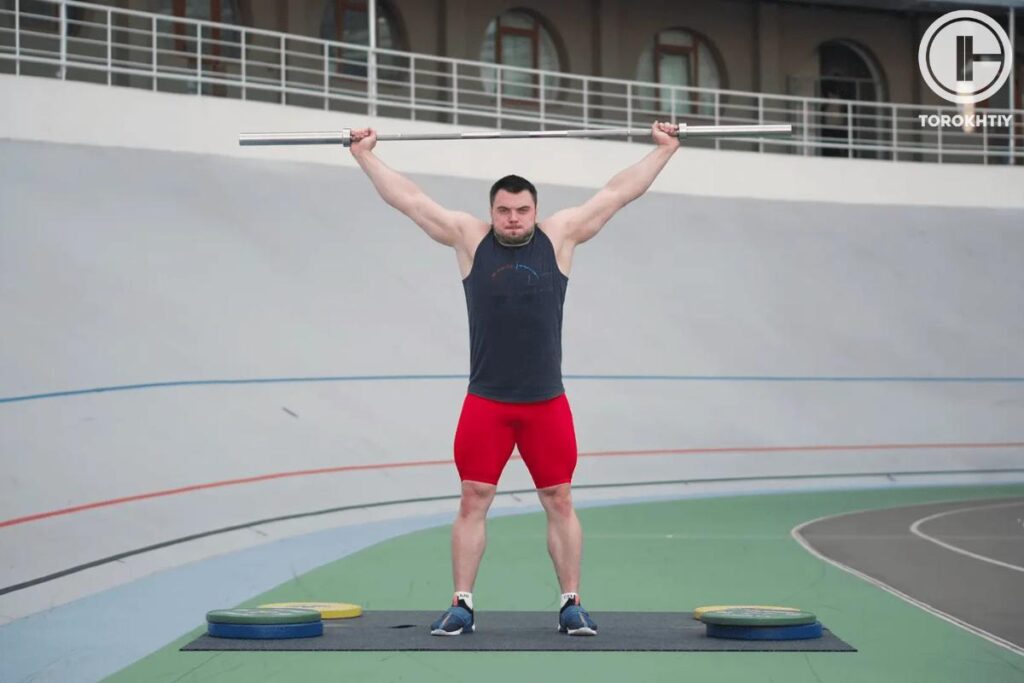
5 Common Muscle Snatch Mistakes
Doing the muscle snatch correctly can be a challenge and everybody will make a mistake from time to time. Here are the most common ones:
❌ Dropping the Elbows
A lot of lifters lower their elbows too quickly before they are raised high enough, which causes their body to lean back. Focus on keeping your elbows pointed straight up during the lift, even while you’re lowering the bar. This helps keep everything properly aligned and prevents you from leaning.
❌ Rushing
Take your time to do each phase correctly. Slow down and focus on perfecting each movement before speeding up to make sure your form is correct.
❌ Poor Bar Path
The bar needs to travel straight up close to your body. Practice lifting in front of a mirror or use a line as a visual guide to make sure the bar stays close, which makes the lift more efficient and easier to control.
❌ Inadequate Shoulder Mobility
Limited shoulder mobility can make it hard to hold the bar overhead properly. Do stretches and mobility exercises for your shoulders to improve strength and flexibility.
❌ Not Engaging the Core
Keep your core tight to stay stable. Practice engaging your core during the lifts and strengthen it with exercises like planks to help stabilize your lifts.
Muscle Snatch Variations
1. Low Hang Muscle Snatch
In the low hang muscle snatch, the bar starts just below the knee. This variation will need you to keep your back strong and core tight because the bar is lifted from a lower position and that places the demand on your posterior chain. The low hang muscle snatch helps improve the first pull and transition into the second pull.
2. High Hang Muscle Snatch
The bar is held at the middle of your thighs. This variation focuses on the final hip snap and quick turnover on the wrists and elbows, without the first pull from the ground. It’s very useful for training the final explosive extension and the speed needed to stabilize the bar in the overhead position quickly.
Muscle Snatch Alternatives
1. Power Snatch
In the power snatch, you catch the bar in a partial squat, which emphasizes speed and power. It’s excellent for developing explosive strength and improving the snatch because it focuses on a strong pull and a faster turnover.
2. Snatch Balance
This exercise improves the snatch technique, speed, and confidence in the catch. It starts with the bar on your shoulders and it involves a quick drop in a squat while pressing the bar overhead. This trains your body to receive the bar in a lower position.
3. Snatch Pull
Snatch pulls are like the snatch but without the overhead catch. They focus on the explosive extension of the legs and hips and high pull of the bar. It helps with the proper bar path and the mechanics you need for an effective snatch.
Progression and Regression Exercises
Regression Exercises
1. Overhead Press
If you start with a basic overhead press, you can build strength and stability in your shoulders and arms, which are crucial for handling the bar in the muscle snatch.
2. Snatch Grip Deadlift
This exercise focuses on the first pull from the floor with a snatch grip but without the turnover. It’s excellent for beginners that still need to develop strength and technique in the first phase of the snatch.
Progression Exercises
Snatch
Once you’ve mastered the muscle snatch, you can move on to something more challenging. A full snatch will have you catching the bar in the full squat and it will test all aspects of your mobility, strength, and technique.
Conclusion
The muscle snatch is a helpful assistance exercise for athletes who lack aggressiveness, power, and technique for snatching heavy weights. It is an amazing tool to improve strength and power for Olympic weightlifters but also the general population. Many benefits combined with a quite approachable learning curve makes it an excellent exercise to try.
How has the muscle snatch improved your lifting technique? Do you do muscle snatches on a regular basis? What variations of the muscle snatch have you found to be the best?
We’d love to hear your thoughts, and if you have any tipsm and tricks on how to make the muscle snatch easier, the beginners reading thai article would sure appreciate them!
Also Read:
- Power Snatch
- Snatch From Blocks
- Snatch Pull
- Muscle Snatch vs Power Snatch vs Snatch: A Detailed Comparison
- Hang Muscle Snatch Exercise: How To, Benefits & Variations
References:
- Photos by Torokhtiy Media Team; decade3d, Canva.com.
Why Trust Us?
With over 20 years in Olympic weightlifting, strength training, nutrition coaching, and general fitness our team does its best to provide the audience with ultimate support and meet the needs and requirements of advanced athletes and professional lifters, as well as people who strive to open new opportunities and develop their physical capabilities with us.
By trusting the recommendations of our certified experts in coaching, nutrition, and sports training programming, as well as scientific consultants, and physiotherapists, we provide you with thorough, well-considered, and scientifically proven content. All the information given in the articles concerning workout programming, separate exercises, and athletic performance, in general, is based on verified data.
The product testing process is described in more detail here.
Author: Jacek Szymanowski
Certified Nutritionist,
M.Sc.Eng. Biotechnology
Performance Architect,
Strength and Conditioning Specialist
With over 30 years of fighting experience, specialization in nutrition coaching for athletes, and expertise in metabolic health and dietary strategies, Jacek offers a comprehensive approach to optimizing your performance and well-being. Backed by a Master of Science degree in Biotechnology, Jacek remains at the forefront of scientific advancements, ensuring that his coaching is always evidence-based and up-to-date.
Reviewed by: Oleksiy Torokhtiy
Olympic Weightlifting Champion, PhD in Sport Science
Best Results: Snatch – 200 kg,
C&J – 240 kg
Oleksiy Torokhtiy is a professional athlete boasting 20 years of experience in Olympic weightlifting. With multiple European and World titles under his belt, he has showcased his prowess in two Olympic Games (Beijing 2008 and London 2012). Upon concluding his illustrious career, Oleksiy dedicated himself to coaching. By 2022, he had conducted over 200 weightlifting seminars worldwide. He is the visionary behind an international sportswear and accessories brand known for its motto, “Warm Body Cold Mind.” Additionally, he is an esteemed author and the creator of a series of training programs and eBooks.




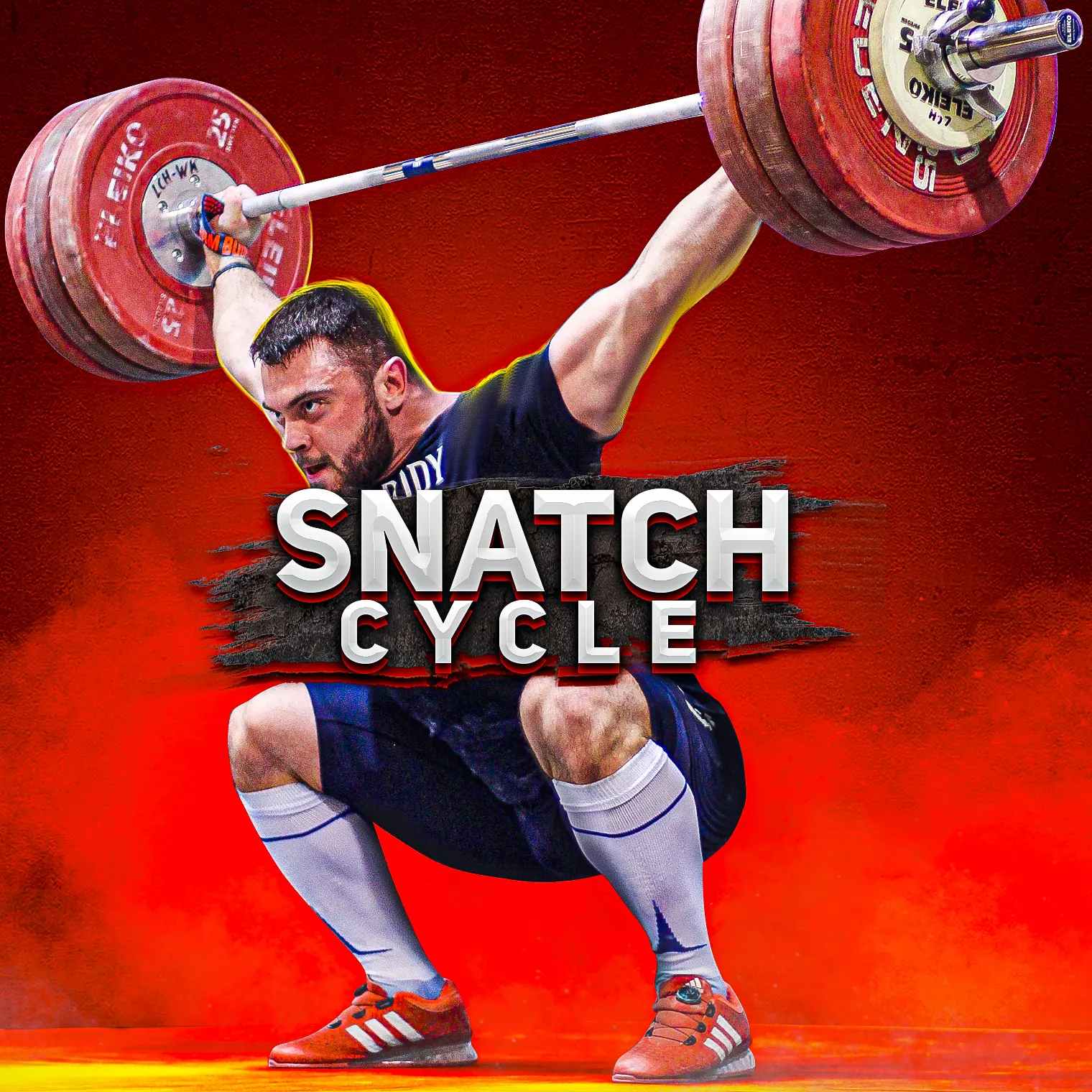
Still have questions after reading our article? Unlock your full potential by engaging with our experts and community! Don’t hesitate — leave a comment below and Jacek Szymanowski will provide a personalized answer and insights to help you reach your goals.